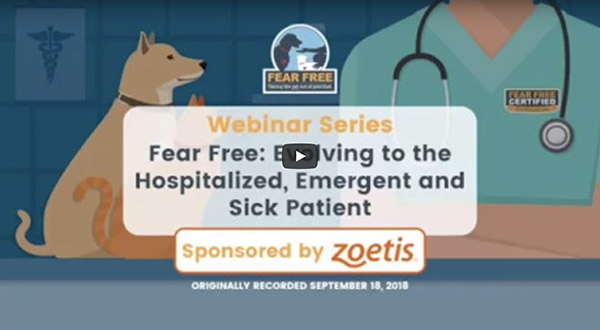By Linda LombardiDo you have clients asking about using nutraceuticals for their pets’ behavior issues? Here’s a primer on what they can—and can’t—do.
The term “nutraceutical” is a mashup of “nutrition” and “pharmaceutical.” Beyond that, because they’re unregulated, there’s no legal definition, and every journal article you read will likely start by spending several paragraphs grappling with this fact. For practical purposes, nutraceuticals are food-derived substances that are claimed to have an effect on health. For example, alpha-casozepine, derived from milk protein, affects neurotransmitters in a similar way to benzodiazepines and may help reduce anxiety.
Looking at a list of these products, their claimed effects, and how they’re sold, it can be a little difficult to see how they are different from drugs–after all, some drugs are derived from nature, too. Lisa Radosta, DVM, DACVB, of Florida Veterinary Behavior Service in West Palm Beach, says, “They are really in my mind not that much different from drugs, except they’re unregulated, but in the mind of the consumer they are different because they are ‘natural,’ and that is something that a lot of people are looking for.”
The desire for something “natural” can be based on misconceptions both about nature and about drugs. “Natural” doesn’t necessarily equal “safe”: the natural world is chock-full of poisonous substances. In some cases, clients may simply need some reassurance about the drug options.
“When clients are thinking of behavior meds, they’re thinking of sedatives that will ‘turn their animals into zombies’ and change their personalities,’ says Jill Orlando, DVM, DACVB, of Carolina Veterinary Behavior Clinic in Raleigh, North Carolina. “When they think of a supplement, they don’t think it’s going to affect their animals as strongly as what they perceive a behavioral drug does.” She also notes that people may unconsciously project the stigma of human mental illness–and the associated medications–onto their pets.
But there can be reasons to consider these products beyond client psychology, if only because there are so few approved medications for fear, anxiety, and stress in animals. The trick is to sift through the research to figure out the safe and effective choices.
Dr. Radosta prefers to use the term “supplement” to also include products derived from herbs– essentially all the products clients may find on the internet or at high-end pet stores and bring in to her with questions–and they all require the same careful consideration, first, for safety.
“A lot of these supplements haven’t been given to a group of dogs to see what they do to the liver, to the kidneys; nobody knows,” she says. “So that’s kind of scary. On the other hand, we shouldn’t throw the baby out with the bathwater. The research does show that some of them can offer benefits for fear, anxiety, and stress in animals. We don’t want to throw things away just because they aren’t a drug, but we also don’t want to assume they’re safe.”
Consider the source of a product. “What I tell my clients and veterinarians is, we try to use supplements from companies that we trust–as much as you can trust a company. We try to use supplements made by pharmaceutical companies. It’s not that I love pharmaceutical companies, but it’s that I can hold someone responsible.”
Whatever the source, read the research and evaluate the evidence yourself. Given the lack of regulation, you first need to know if a product has been properly tested for safety in dogs and cats. “For me, that’s key. Did someone give this to a bunch of animals? What is the LD50? Do we know? We shouldn’t be playing around with an animal’s life.”
Regarding evidence for effectiveness, methods of studies can vary widely. One thing to consider, says Orlando: “Is the research done on the actual product, or is it done on the functional ingredient in that products? That’s not to say that that information isn’t useful, but it doesn’t necessarily prove that product is effective.” Other factors include but are not limited to the following:
- Species used in the study: was the research done on dogs and cats or only on rats and mice?
- What condition was studied? If a study was narrowly focused on, say, separation anxiety, the substance may not work for other types of anxiety.
- What was evaluated? Actual behavior or physical measurements such as stress hormones? Both types of studies have strengths and weaknesses.
If you’re still not sure, Dr. Radosta says, consult a veterinary behaviorist—that’s why they’re there!
Once you’ve decided on a product, Dr. Radosta says, make sure clients have reasonable expectations about efficacy. The common expectation that “natural” means “won’t affect the animal as strongly” is correct; it means it’s not going to have as strong a beneficial effect as a drug. Where you might get a 50 percent effect on a behavior from a drug, you can expect about half that from a supplement. “That in my practice is considered a positive outcome, and the day the client takes the supplement home I make that very clear,” she says. “If you say your dog is 25 percent changed, that’s a success.”
Because effectiveness is reduced, more than one supplement may be needed. One of Dr. Radosta’s clients whose dog has an extreme storm phobia now administers 11 capsules a day, a regimen that might add more stress for some owners and pets. These products also tend to be more expensive than their pharmaceutical counterparts, a cost that can add up quickly.
Finally, with either supplements or medications, the ideal solution relies on more than just pills; it should also involve behavioral modification. Realistically, though, this isn’t always going to be possible. Not everyone can afford a skilled trainer, and sometimes life is just too overwhelming to add another burden on clients’ time. “I meet a lot of people here in south Florida who are taking care of elderly parents and I do discuss that with them, but I have empathy,” Dr. Radosta says. “I say straight up: your life looks really stressful to me, how are you feeling, can you do this?”
But nearly everyone can handle some simple changes such as crating a fearful or aggressive dog in another room when company comes to avoid exposing a pet to triggers.
“Behavior modification can’t always happen,” Dr. Radosta says, so sometimes we do what we call medication and management: supplements or medication–something that changes neurochemistry–and managing the environment so the behavior can’t occur.”
This article was reviewed/edited by board-certified veterinary behaviorist Dr. Kenneth Martin and/or veterinary technician specialist in behavior Debbie Martin, LVT.










